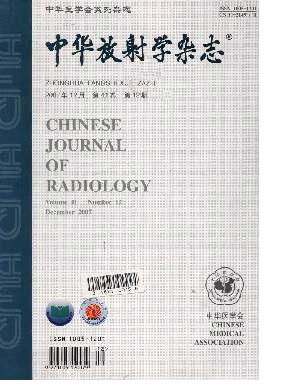【原发性长骨横纹肌肉瘤的x线诊断(附4例报告)】。
Q4 Medicine
Zhonghua fang she xue za zhi Chinese journal of radiology
Pub Date : 1989-06-01
引用次数: 0
摘要
本文报告4例原发性长骨横纹肌肉瘤,均经手术及病理证实。有3名男性和1名女性。累及股骨1例,累及胫骨3例。根据影像学表现,肿瘤可分为两种类型:(1)溶骨型:表现为大面积溶骨破坏,无骨膜反应;(2)混合型:除斑片状溶骨破坏外,髓腔或软组织内可见钙化或致密的肿瘤骨,常伴有骨膜反应。本文章由计算机程序翻译,如有差异,请以英文原文为准。
[X-ray diagnosis of primary rhabdomyosarcoma of long bone (report of 4 cases)].
Four cases of primary rhabdomyosarcoma of long bone were reported, all confirmed by operation and pathology. There were 3 male and 1 female. The femur was involved in 1 case and tibia in 3. Based on the radiologic manifestations the tumor could be divided into two different types: (1) Osteolytic form: Presenting as large area of osteolytic destruction without periosteal reaction; (2) Mixed form: In addition to patchy osteolytic destruction, calcification or dense tumor bone in the medullary cavity or soft tissue can be seen, often associated with periosteal reaction.
求助全文
通过发布文献求助,成功后即可免费获取论文全文。
去求助
来源期刊

Zhonghua fang she xue za zhi Chinese journal of radiology
Medicine-Radiology, Nuclear Medicine and Imaging
CiteScore
0.30
自引率
0.00%
发文量
10639
 求助内容:
求助内容: 应助结果提醒方式:
应助结果提醒方式:


